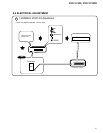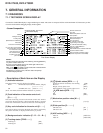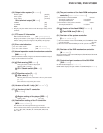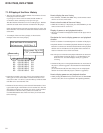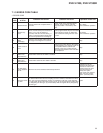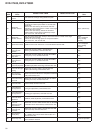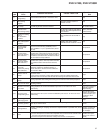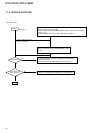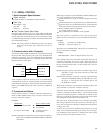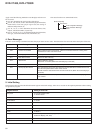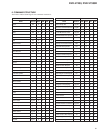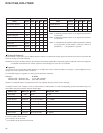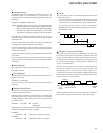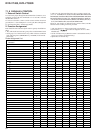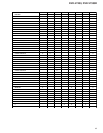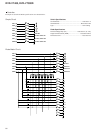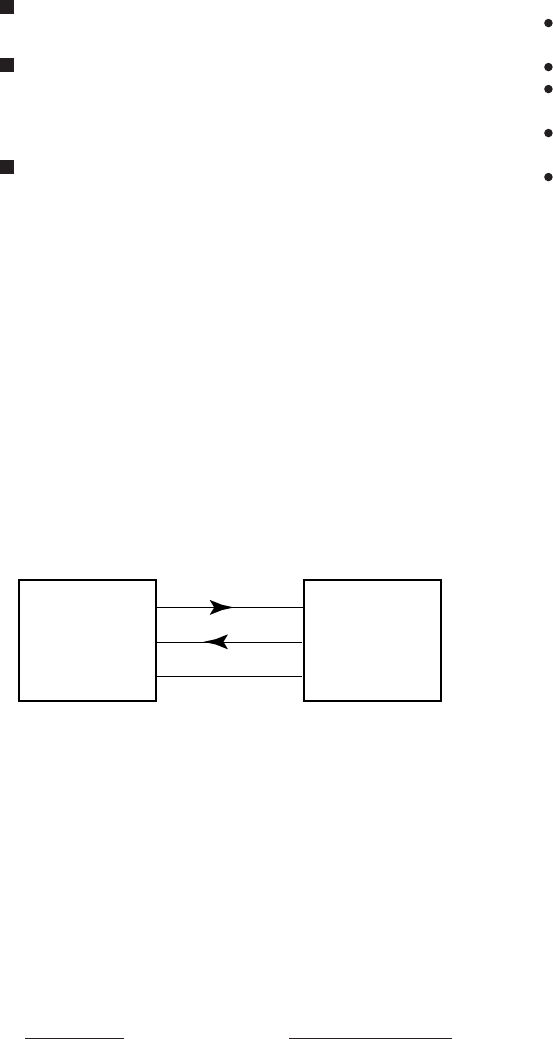
DVD-V7400, DVD-V7300D
59
7.1.5 SERIAL CONTROL
1. Serial Interface Specifications
Signal Interface
The signal interface is a standard RS-232C connection.
Data Type
Data Length: 8 bit
Stop Bit: 1 bit
Parity bit: No Parity
Data Transfer Speed (Baud Rate)
The data transfer speed may be set to either 4800 or 9600 baud
through the Industrial player menu screen and/or with the Advanced
Feature Menu Set command (please refer to the DVD-V7400/
V7300D Operating Instructions and the Advanced Feature Menu
Set command description).
NOTE: The factory default is 4800 baud; however, the player
memorizes the transfer speed each time the power is
cycled.
2. Communication with a Computer
The DVD-V7400/V7300D communicates to the computer through
the player's RS-232C port using pins 2 and 3 for communication
and Pin 1 for grounding. Control or "handshaking" lines other than
the TxD and RxD connections are not required. Please refer to the
diagram below for clarification.
Computer DVD-V7400/7300D
TxD
RxD
GND
RxD (Pin 3)
TxD (Pin 2)
GND (Pin 1)
Some computers require the CTS port to be set to HIGH during
communication. It is best to connect the CTS port on the computer
to the DTR port on the player. During normal operation the player's
DTR is set to HIGH thus the unit is able to receive a command at
any time.
3. Command and Status
During normal operation, a computer transmits commands to a
DVD-V7400/V7300D and the player responds with the status
message, 'execution complete'.
Example:
COMPUTER DVD-V7400/V7300D
(1) "Search to Frame 1000" \ (2) Search Execution
| (3) Complete
(4) "Play to Frame 2000" \ (5) Play Execution
| (6) Complete
NOTE: The length of a command string is limited to 32 characters.
Please refer to COMMAND STRUCTURE for additional
information.
When using a computer to control the DVD-V7400/V7300D player,
follow the command protocols listed below:
ASCII characters are used for actual commands and status
response
Command mnemonic is expressed as two (2) ASCII characters
Uppercase letters are recommended; however, usually there are
no distinctions between the uppercase and lowercase letters
Some commands require an argument
(e.g. chapter number or speed)
Use a command as the terminator of an argument
The player executes a command as soon as the carriage return
<CR> is received. The <CR> acts as the command line terminator.
Example:
CH<CR> : Set chapter for address mode
10SE<CR> : Search to chapter 10
The player has a command buffer, which stores a command string
of up to 32 characters in length.
Example:
10SE 20PL<CR> : Search to chapter 10 then play to 20
The command string enters the buffer with the left character and
continues sequentially from left to right. When the <CR> is
entered, the commands are executed sequentially beginning with
the first command in the buffer. In the example above, the first
command is 10SE.
NOTE: The player ignores codes in the command string such as
<SPACE> or <LF> (line feed) which do not affect the
player's operation.
NOTE: Some commands, sent after a specialty command which
includes an AUTOSTOP setting, (PL, MF, MR, etc.), cause
the player to execute the new command before the
AUTOSTOP is enacted.
When all the commands in a string have finished executing, the
player transmits or returns the "complete" message.
The player returns an R after a command has been executed. This
response is called the Automatic Status. The Automatic Status
signals the computer program to send the next command. If this
function is not used, the command processing time must be taken
into consideration before the next command is sent.
If an error occurs, the player returns an error message such as E04.
The message indicates an error has occurred as well as the type of
error. Error messages are in the form of EXX where XX represents
a 2-digit error code.
In some cases, an incorrect command sends the player to search
within a non-recorded area and the player returns an error message.
Use the Request Status function to determine the unit's current
status (actual player hardware failures are rare).



